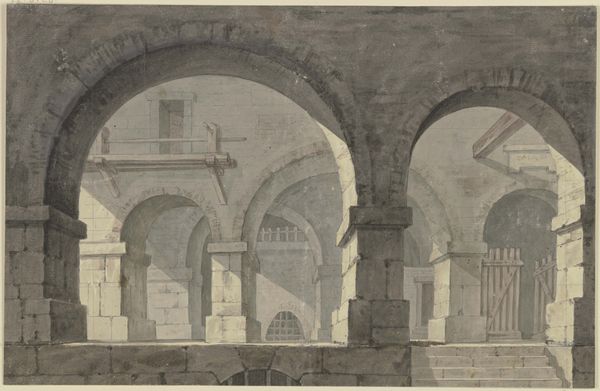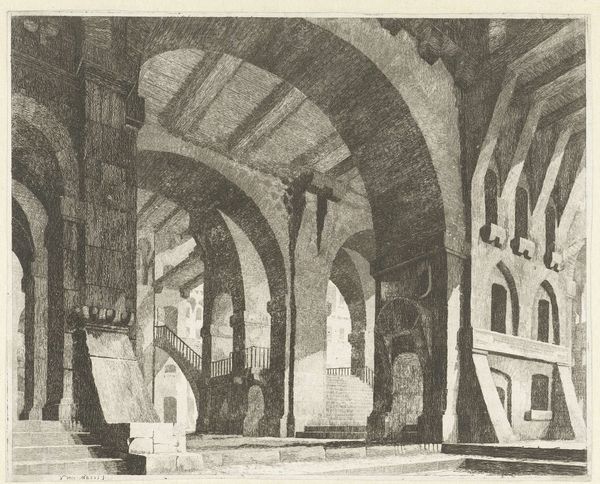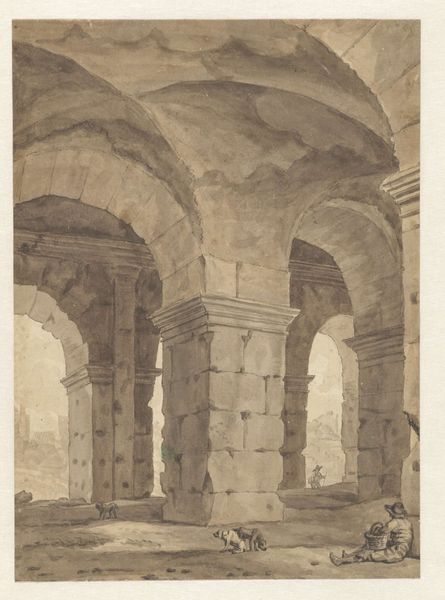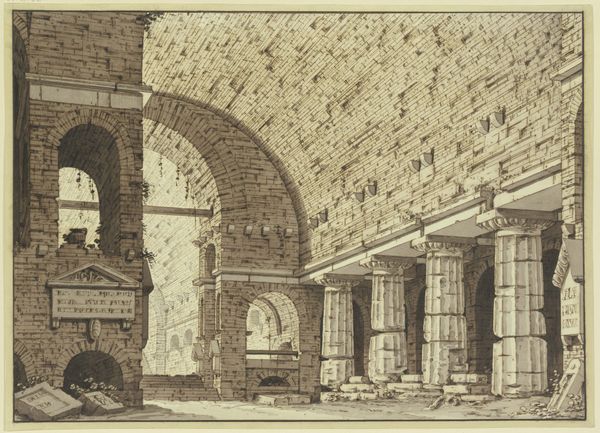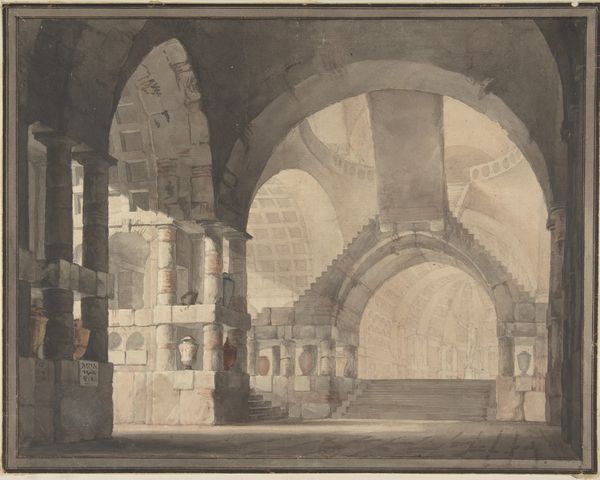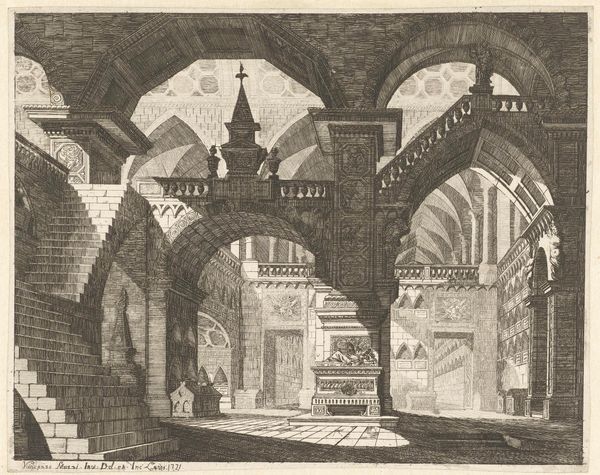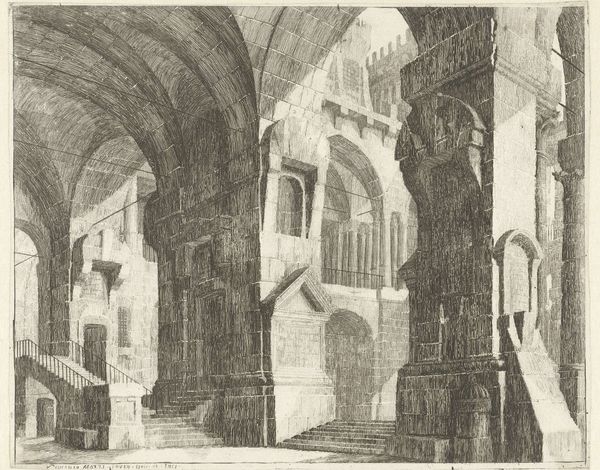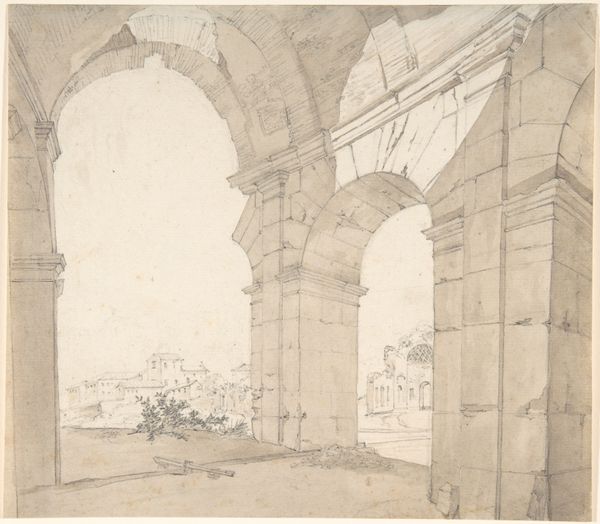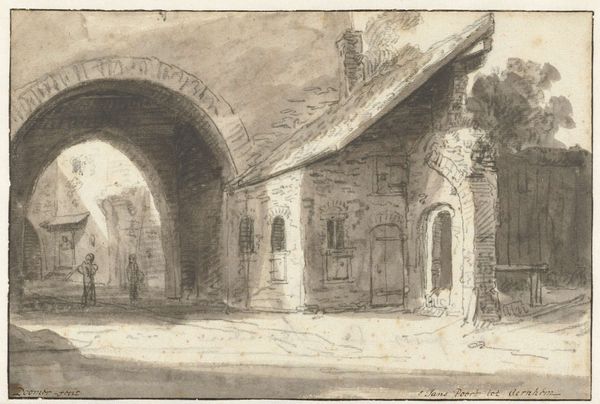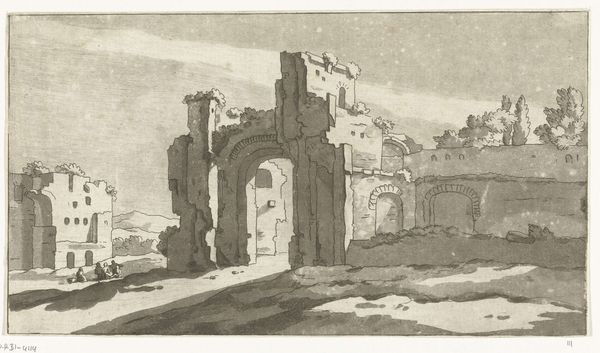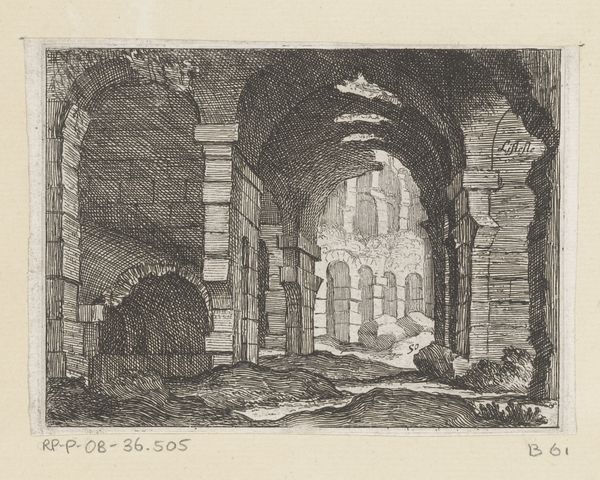
drawing, paper, ink, architecture
#
drawing
#
neoclacissism
#
landscape
#
perspective
#
paper
#
ink
#
chiaroscuro
#
architectural drawing
#
architecture
Dimensions: height 322 mm, width 418 mm
Copyright: Rijks Museum: Open Domain
Editor: This is "View in the Colosseum" by Jean Grandjean, made between 1765 and 1781, a drawing in ink on paper. It’s quite striking – the light and shadow create such a dramatic and almost desolate atmosphere. What story do you think this artwork is trying to tell us? Curator: The story for me is the ongoing dialogue between power, history, and decay. Grandjean, working in the Neoclassical period, wasn’t just capturing the Colosseum’s visual grandeur, but also engaging with its symbolic weight. How do you see its state of ruin impacting its message? Editor: I hadn’t thought of it like that. The ruins make me think of time, and how empires rise and fall. It feels very…melancholy. Curator: Exactly. The Colosseum, initially a symbol of Roman power and entertainment, became a ruin, signifying the transience of dominance. Artists like Grandjean were acutely aware of the layers of history and their implications for contemporary society. This ruin, though romanticized, silently questions structures of power. Considering that Neoclassicism emerged partly from Enlightenment ideals, do you think there's a subtle critique of power embedded here? Editor: Perhaps, a reminder of the dangers of unchecked authority? It makes you wonder about what present-day structures might become ruins, both physically and metaphorically. Curator: Precisely! The act of drawing becomes an act of both documentation and critical reflection. By emphasizing the Colosseum's weathered state, the artist subtly invites the viewer to consider what endures beyond imperial power and spectacle. Editor: That’s really changed how I see it. I was just reacting to the aesthetic, but understanding the historical and social context adds so much more depth. Curator: Context is everything, enabling a deeper appreciation of not only what we see but how we interpret it and its relationship to the present day.
Comments
No comments
Be the first to comment and join the conversation on the ultimate creative platform.
